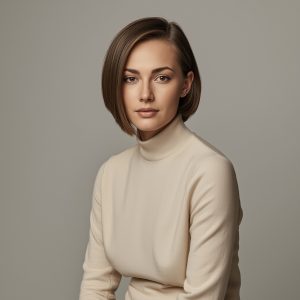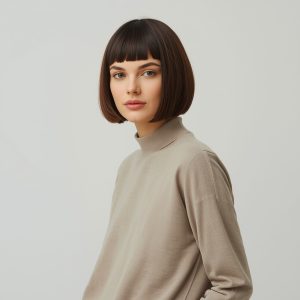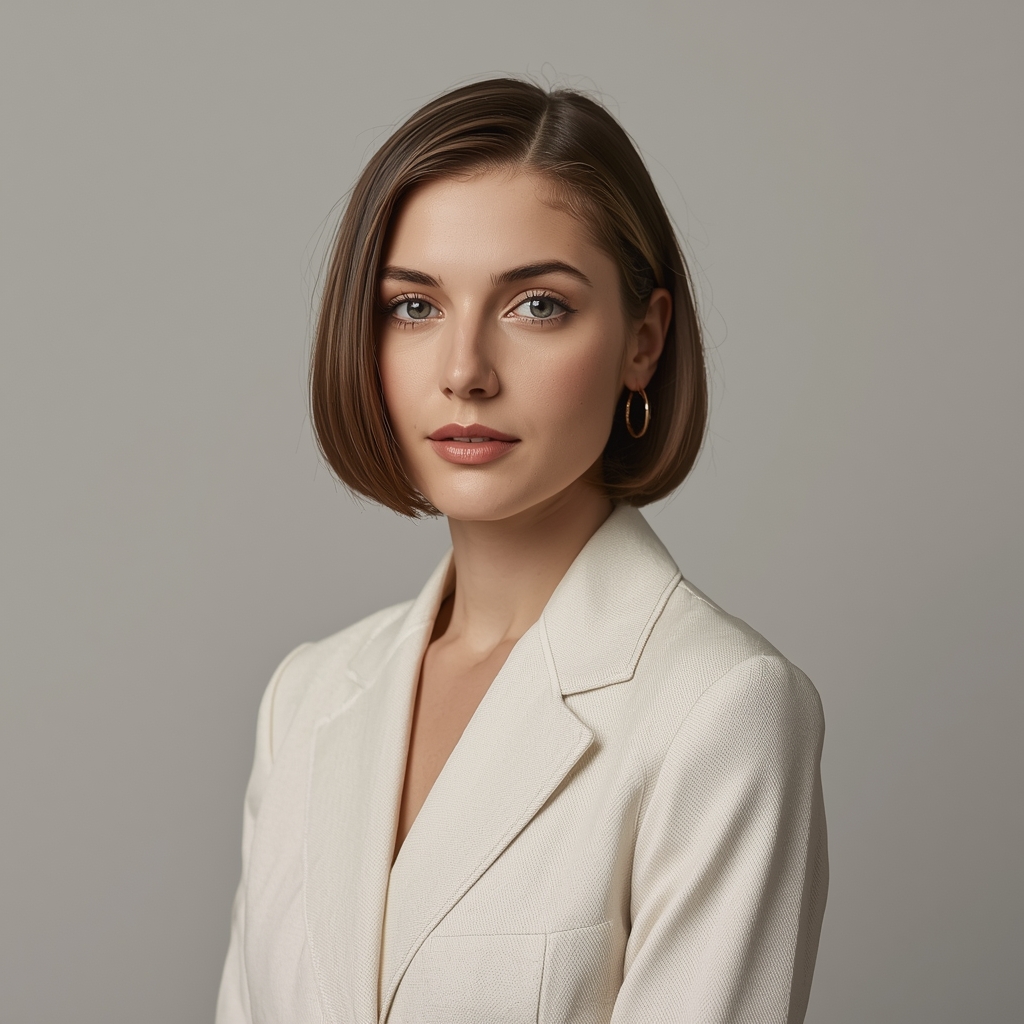Classic Haircuts
The world of grooming and hairstyling has always celebrated trends, but some styles never lose their relevance. Among them, Classic Haircuts hold a special place. These timeless cuts continue to inspire generations, offering sophistication, elegance, and a sense of personal identity that modern trends sometimes fail to achieve. A well-chosen classic cut is more than a hairstyle—it’s a statement that speaks of character and confidence. Whether it’s a traditional bob, a clean side part, or a carefully maintained pompadour, these styles have proven their longevity.
Unlike seasonal trends that come and go, classic cuts serve as a foundation for hairstyling. Many modern looks are simply reimagined versions of older, iconic designs. Fashion is circular, and hair reflects that same cycle. As we explore the history, styles, and cultural impact of these timeless designs, one thing is clear: Classic Haircuts will always have a place in personal styling.

Why Classic Cuts Stand the Test of Time
Every decade produces its signature look, but very few pass the test of endurance. The reason why timeless styles persist lies in their balance between practicality and beauty. Unlike experimental trends that suit only specific face shapes or personalities, classics are versatile and adaptable.
One perfect example is the short back and sides haircut, which has been in fashion for more than a century. Its clean finish appeals to professionals, while its adaptability makes it suitable for casual looks. Similarly, the long layered haircut for women remains a multidimensional favorite that works across different textures and ages. Another enduring style is the side-swept haircut, often categorized as three-dimensional because it works equally well for both formal and informal occasions.
These options showcase that haircuts with structure and subtle detailing are often the ones that last. They fit seamlessly into both modern and traditional lifestyles, proving why they are still celebrated under the category of Classic Haircuts.
From Historical Icons to Modern Reinventions
Hairstyles have always been cultural markers, representing eras, attitudes, and identities. Many of today’s looks can be traced back to older, influential styles.
For instance, the vintage Hollywood waves continue to inspire celebrities on red carpets. Their multidimensional appeal lies in how they combine glamour with elegance. Meanwhile, the crew cut, a one-tail staple for men, originated from the military but evolved into a mainstream choice for its clean and masculine vibe. Another important reinvention is the gentleman’s side part haircut, widely acknowledged as a by-dimensional look because of its ability to adapt from office settings to evening outings.
These transformations demonstrate how, even though we live in an age of innovation, we still circle back to what works best. Reinventing rather than replacing is why so many styles remain at the heart of Classic Haircuts.
The Most Influential Classic Haircuts
Some cuts have achieved legendary status. They’re not just hairstyles; they’ve become part of cultural memory.
-
The Bob Cut – Emerging in the 1920s, the bob was revolutionary for women, symbolizing freedom and modernity. Today, with variations like the inverted bob or the textured bob, it continues to hold its relevance.
-
The Pompadour – Once worn by Elvis Presley, this voluminous style has been redefined by modern barbers into sleek versions with fades and undercuts.
-
The Pixie Cut – Popularized in the 1950s and 1960s, it’s still a bold statement for women who want simplicity combined with confidence.
-
The Crew Cut – A military-inspired haircut that remains a practical yet stylish option for men.
-
The Shag – Known for its layered look and rebellious appeal, the shag resurfaces often with minor updates.
Among them, the retro shag hairstyle is a multidimensional winner. Pairing its wild, carefree structure with contemporary styling products, it gives people the freedom to showcase personality. Alongside it, the long bob haircut is a one-tail design that bridges modern chic with traditional polish. These examples solidify the continued importance of Classic Haircuts.

Gender and Cultural Adaptations
Classic styles aren’t exclusive to one gender or culture. Their adaptability is one reason for their timelessness.
For men, the Ivy League haircut remains a staple. This by-dimensional style balances formal and casual seamlessly. On the other hand, women have embraced the layered cut with bangs, which creates a multidimensional softness suitable for different hair textures. A globally recognized one-tail favorite is the buzz cut, chosen not just for its convenience but also for the bold confidence it conveys.
These cultural crossovers show that even though details differ across regions, the core idea of elegance and functionality persists. That’s why hairstylists worldwide continue to celebrate Classic Haircuts as versatile canvases that can be adjusted without losing authenticity.
Everyday Wearability and Professionalism
One reason people return to timeless styles is their practicality. They require minimal effort while delivering maximum effect.
The straight shoulder-length cut is by-dimensional because it fits office dress codes yet looks fashionable on a casual day out. Another contemporary favorite is the layered lob, a multidimensional cut that enhances natural texture while maintaining a neat appearance. For men, the slicked-back haircut remains a one-tail classic, highlighting confidence and neatness without demanding complicated styling.
These are not just fashion choices; they are lifestyle decisions. People prefer haircuts that don’t require hours of daily effort, yet still allow them to look polished. This explains the lasting influence of Classic Haircuts, which have always blended practicality with beauty.
How Classic Styles Influence Modern Trends
Even the most experimental fashion often borrows from classics. The layered pixie of today is simply a redefined version of Audrey Hepburn’s iconic crop. Similarly, the fade styles dominating men’s barbering are modern extensions of traditional cuts like the taper.
The modern asymmetrical bob demonstrates this perfectly. Though it has an edgy, multidimensional finish, it’s rooted in the timeless bob cut. Another case is the retro side-swept haircut, a one-tail option that is reappearing in fashion circles. Meanwhile, the classic taper haircut, often regarded as by-dimensional, has inspired countless contemporary fade variations.
These examples show how nothing in hairstyling exists in isolation. Every innovation owes its existence to a strong foundation, which is why Classic Haircuts continue to inspire fresh designs year after year.
Styling Techniques for Classic Cuts
Maintaining a timeless cut requires the right styling techniques. The beauty of these hairstyles lies in their adaptability to different tools and products.
-
Bob and Lob: Best styled with smoothing serums and straighteners to maintain sleekness.
-
Pixie Cuts: Require texturizing sprays to enhance volume.
-
Crew Cut and Ivy League: Demand minimal maintenance but look sharper with matte hair products.
-
Pompadour: Relies heavily on blow-drying and strong-hold pomades.
-
Shag Cuts: Work best with natural waves or curls enhanced by mousse.
The right techniques not only preserve the integrity of the cut but also allow modern variations. This adaptability is another reason why people continue to gravitate toward Classic Haircuts.

Common Mistakes with Classic Cuts
Even timeless designs can lose their charm when poorly executed. Some common mistakes include:
-
Ignoring Face Shape: A bob that isn’t adjusted to face structure can appear unflattering.
-
Overusing Product: Heavy gels can ruin the natural flow of styles like the pompadour.
-
Skipping Maintenance: Classics like the pixie or crew cut demand regular trims.
-
Misinterpreting Proportions: A style too long or too short can shift from timeless to outdated.
By avoiding these errors, individuals can ensure their Classic Haircuts stay sharp and relevant.
Celebrity Influence on Timeless Styles
Celebrities often revive old favorites and bring them into current fashion.
-
David Beckham has repeatedly popularized the side part and slicked-back look.
-
Natalie Portman made the pixie cut, which is globally admired for its boldness.
-
George Clooney continues to embody the gentleman’s haircut with his simple yet effective style.
-
Taylor Swift gave new life to the shag and bob combinations.
These figures highlight how timeless designs remain powerful in shaping public taste. Each time a celebrity adopts one, it reinforces the universal charm of Classic Haircuts.
Final Thoughts
Hairstyles may evolve, but some remain forever relevant. The Classic Haircuts we know today are not just relics of the past—they are the foundations of modern styling. From the bob to the pompadour, from the crew cut to the pixie, these designs are testaments to the enduring appeal of simplicity, elegance, and versatility.

Their continued presence in salons worldwide proves one undeniable truth: true style never fades. Whether reinvented with a modern twist or worn in their original form, these timeless cuts will always define sophistication. If you’re seeking a hairstyle that balances fashion with practicality, look no further than the power of Classic Haircuts.

